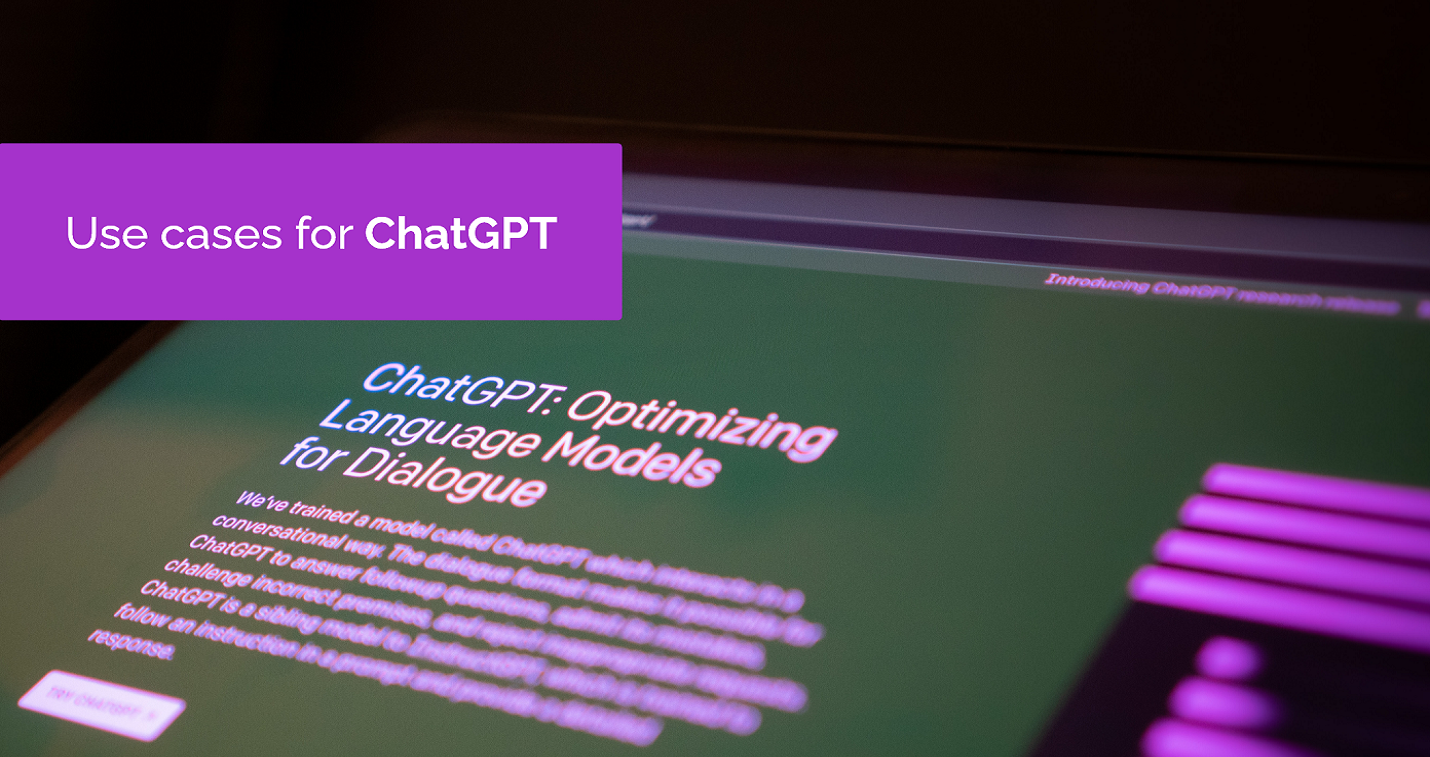What is ChatGPT?
ChatGPT is a
cutting-edge AI chatbot that generates human-like responses to user input—and
it has taken the world by storm. With its advanced AI technology, ChatGPT can
understand the context of the user's input and engage in continuous dialogue in
real time.
The Use Cases
ChatGPT has proven to be a versatile tool with a wide range
of applications, from summarizing text to generating SQL queries. However, the
ultimate question remains: how can this innovation enhance your business? To
answer this, we have summarized some of the key use cases for ChatGPT in the
tech industry below.
1. Create offers
Many companies are aware of their strengths but are not fully utilizing them to reach their full potential. As an AI chatbot, ChatGPT can help you identify opportunities for growth by analyzing your competencies and offering suggestions for new services or products. ChatGPT can even assist in creating outlines for accompanying documents you may need, such as a go-to-market plan.
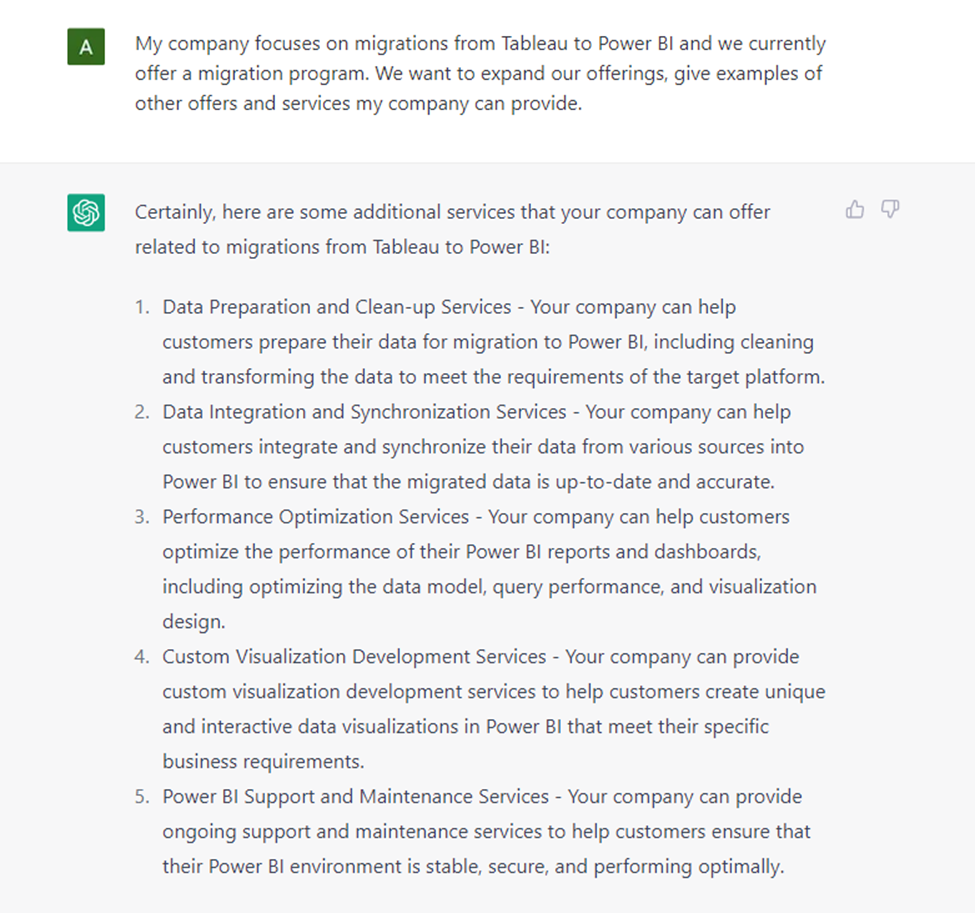 |
| Figure 1: Input and result example for use case #1 |
2. Close information gaps
ChatGPT can bridge information gaps within non-technical teams, empowering them to make decisions with less reliance on technical resources. Whether it's for verifying information for an article or providing context for a case study, ChatGPT's AI capabilities enable non-technical employees to improve their productivity and efficiency. This reduces the impact of unintentional silos and fosters a more informed organization.
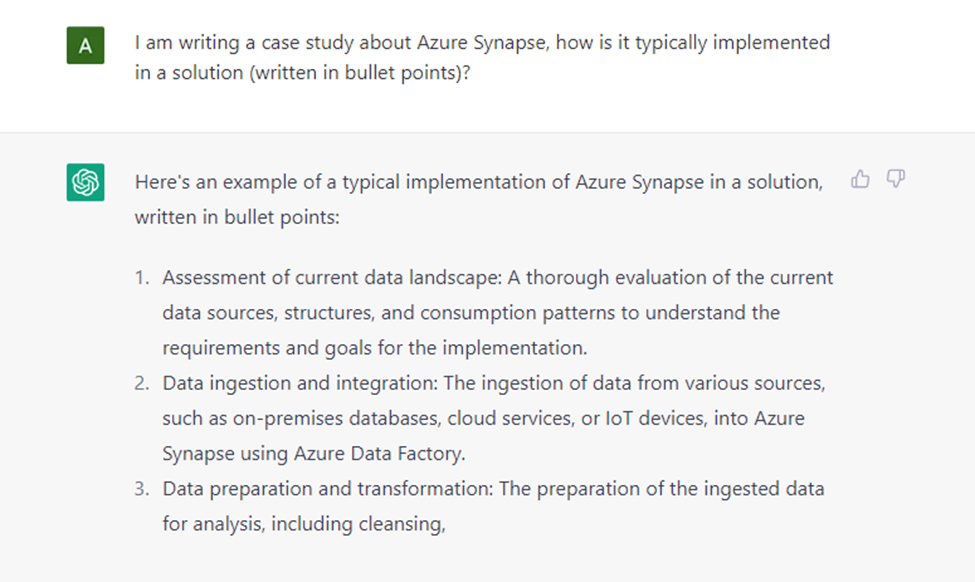 |
| Figure 2: Input and result example for use case #2 |
3. Optimize processes
By inputting prompts into ChatGPT, you can receive direct recommendations on how to improve and optimize processes. The use of ChatGPT in this way can save you time and resources, as well as provide you with new insights and ideas that may not have been considered.
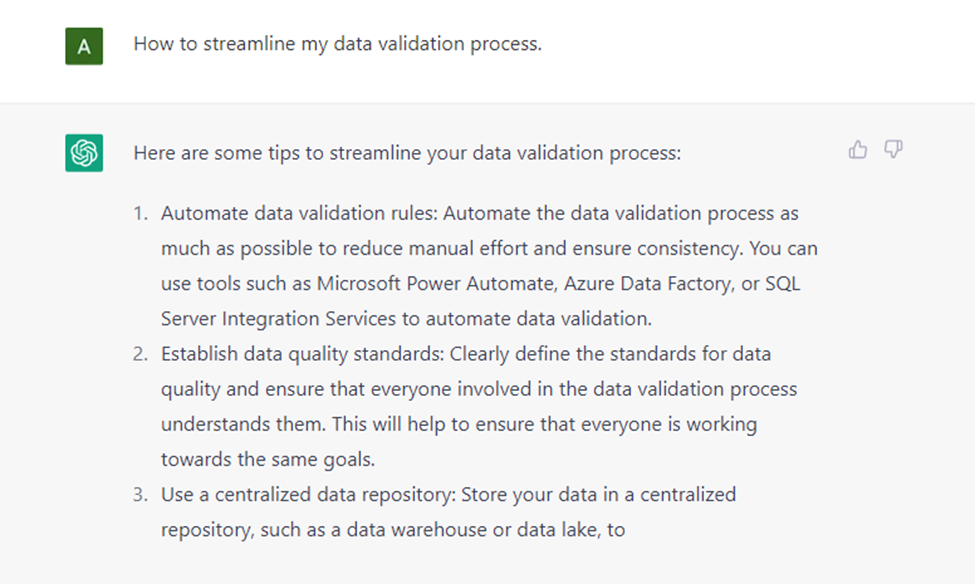 |
| Figure 3: Input and result example for use case #3 |
4. Research
ChatGPT can assist your organization in researching various products, services, and companies in the industry. Though the information may not be fully comprehensive, it provides you with a valuable starting point and direction for further research.
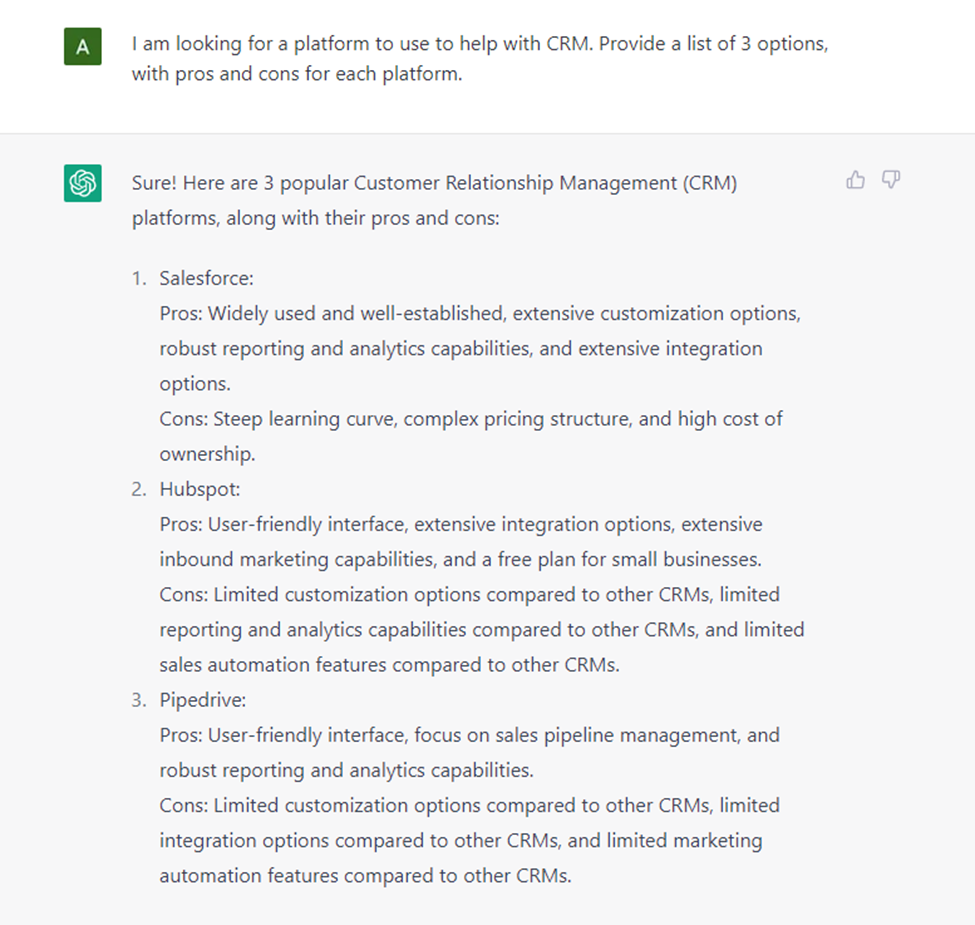 |
| Figure 4: Input and result example for use case #4 |
5. Use in coding-related tasks
ChatGPT has proven to be a valuable asset, even for coding-related activities. Here are some areas where ChatGPT can provide support:
• Code/Language Queries: ChatGPT can be used to answer questions related to code and programming languages. It can provide precise answers, including code snippets, to help you troubleshoot issues or learn new concepts.
• Code Generation: The chatbot can also be used to generate code in a variety of programming languages, streamlining the development process.
• Code Translation: ChatGPT can help you translate code from one programming language to another. This can be useful for those who are working on projects that require code to be ported to a different language or platform.
• Generating Dummy Data: ChatGPT can also be used to generate dummy data in a specified format, which can be useful for testing and validating software applications. This can help to ensure that the software is functioning correctly before it is released to users.
• Debugging and Repairing Code: ChatGPT can be utilized for debugging and repairing code, helping in identifying and fixing errors to improve the overall quality of the code.
• Learning a New Library or Language: ChatGPT can be a helpful resource when using a new library or programming language. It can provide answers to questions and guidance on how to use specific functions or features, making the learning process smoother and more efficient.
In conclusion, ChatGPT's capabilities have revolutionized the way organizations operate. Its ability to provide human-like responses and its deep understanding of context makes it a valuable tool. However, it's important to remember that while ChatGPT is highly capable, it's not perfect. As with any technology, it should only be used as a tool and not relied upon as the sole source of information. It's crucial to validate any information generated by ChatGPT and to always use it in conjunction with human oversight and judgment.

